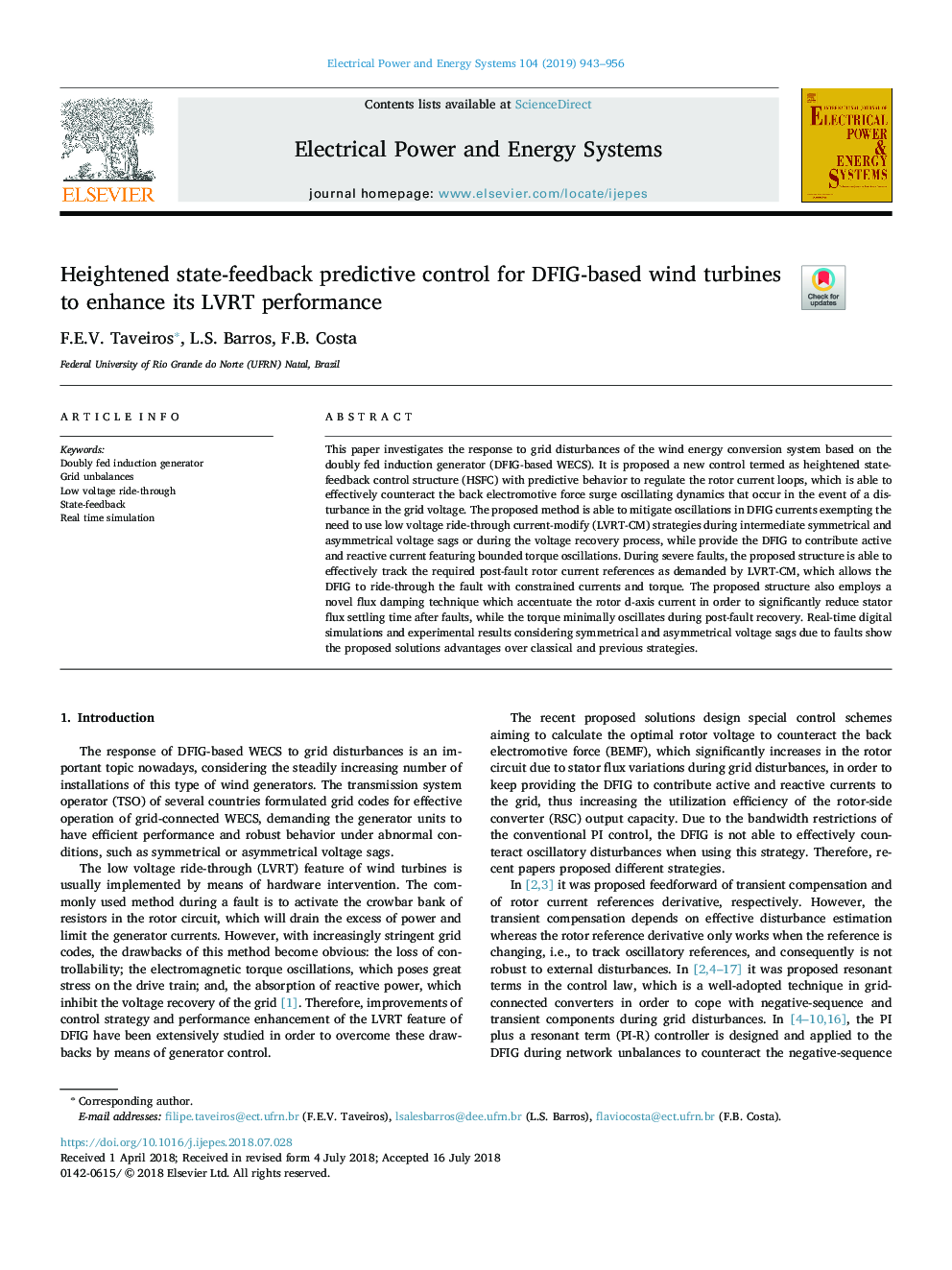| Article ID | Journal | Published Year | Pages | File Type |
|---|---|---|---|---|
| 11002375 | International Journal of Electrical Power & Energy Systems | 2019 | 14 Pages |
Abstract
This paper investigates the response to grid disturbances of the wind energy conversion system based on the doubly fed induction generator (DFIG-based WECS). It is proposed a new control termed as heightened state-feedback control structure (HSFC) with predictive behavior to regulate the rotor current loops, which is able to effectively counteract the back electromotive force surge oscillating dynamics that occur in the event of a disturbance in the grid voltage. The proposed method is able to mitigate oscillations in DFIG currents exempting the need to use low voltage ride-through current-modify (LVRT-CM) strategies during intermediate symmetrical and asymmetrical voltage sags or during the voltage recovery process, while provide the DFIG to contribute active and reactive current featuring bounded torque oscillations. During severe faults, the proposed structure is able to effectively track the required post-fault rotor current references as demanded by LVRT-CM, which allows the DFIG to ride-through the fault with constrained currents and torque. The proposed structure also employs a novel flux damping technique which accentuate the rotor d-axis current in order to significantly reduce stator flux settling time after faults, while the torque minimally oscillates during post-fault recovery. Real-time digital simulations and experimental results considering symmetrical and asymmetrical voltage sags due to faults show the proposed solutions advantages over classical and previous strategies.
Related Topics
Physical Sciences and Engineering
Computer Science
Artificial Intelligence
Authors
F.E.V. Taveiros, L.S. Barros, F.B. Costa,
